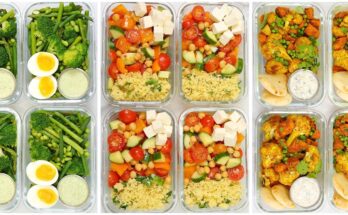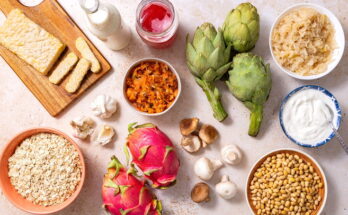Pizza Recipe: Is there anyone who doesn’t love pizza? This versatile dish has won hearts worldwide, thanks to its endless possibilities of flavors and textures.
Whether you’re a fan of thin crust or deep-dish, a classic margherita or something gourmet, pizza has something for everyone.
Making pizza at home is not just rewarding; it’s also healthier and more economical than ordering out. Plus, it lets you unleash your creativity with toppings and flavors.
This guide will take you through each step to create a mouthwatering pizza right in your kitchen.
Tools and Ingredients You’ll Need
Essential Tools
Before diving into the recipe, gather the right tools to make the process smooth:
- Pizza Stone or Baking Sheet: A pizza stone ensures even cooking and a crispy base, but a baking sheet works fine too.
- Rolling Pin: For spreading the dough evenly.
- Mixing Bowls and Measuring Tools: Precise measurements ensure consistent results.
Key Ingredients
A great pizza starts with quality ingredients:
- Flour: All-purpose flour works, but bread flour gives a chewier crust.
- Yeast: Active dry yeast or instant yeast helps the dough rise.
- Cheese: Mozzarella is a staple, but feel free to experiment with gouda, cheddar, or parmesan.
- Sauce: Tomato-based sauces are classic, but pesto or Alfredo sauce adds variety.
- Toppings: From meats to veggies and even fruits, the sky’s the limit.
Making the Dough
Ingredients for the Dough
- 3 ½ cups of bread flour
- 1 packet (2 ¼ tsp) of active dry yeast
- 1 tsp sugar
- 1 ¼ cups warm water
- 2 tbsp olive oil
- 1 tsp salt
Step-by-Step Dough Preparation
- Activate the Yeast: Mix warm water and sugar, then stir in the yeast. Let it sit for 5-10 minutes until it becomes frothy.
- Mix Ingredients: In a large bowl, combine flour and salt. Gradually add the yeast mixture and olive oil, mixing until it forms a shaggy dough.
- Knead the Dough: Transfer to a floured surface and knead for 8-10 minutes until smooth and elastic.
- Let It Rise: Place the dough in a lightly oiled bowl, cover it with a damp cloth, and let it rise for 1-2 hours or until doubled in size.
Pro Tip: For an ultra-flavorful crust, let the dough ferment in the fridge overnight.
Preparing the Sauce
Simple Tomato Sauce Recipe
Ingredients:
- 1 can (14 oz) of crushed tomatoes
- 2 cloves of garlic (minced)
- 1 tbsp olive oil
- 1 tsp dried oregano
- Salt and pepper to taste
Instructions:
- Heat olive oil in a pan and sauté garlic until fragrant.
- Add crushed tomatoes, oregano, salt, and pepper. Let simmer for 10-15 minutes.
- Allow the sauce to cool before spreading it on the dough.
Alternative Sauce Options
If you want to step away from tradition, try:
- Pesto Sauce: Perfect for a fresh and herbaceous flavor.
- White Sauce: A creamy base for gourmet pizzas.
- BBQ Sauce: Great for a smoky twist, especially with chicken or bacon toppings.
Toppings Selection
Classic Toppings
- Pepperoni, sausage, mushrooms, onions, and olives are perennial favorites.
- Fresh basil and mozzarella for a traditional margherita.
Creative Toppings
Why not try something new?
- Fruits: Pineapple or figs can add a sweet balance.
- Vegetables: Roasted bell peppers, artichokes, or sun-dried tomatoes.
- International Flavors: Add some paneer for an Indian twist or feta for a Greek-inspired pie.
Balancing Flavors
Ensure harmony by balancing salty, sweet, and savory flavors. For instance, pair salty olives with sweet caramelized onions or spicy sausage with a mild cheese.
Assembling the Pizza
Preparing the Base
Once your dough has risen and your sauce is ready, it’s time to prepare the base:
- Preheat the Oven: Heat your oven to the highest temperature, typically 475°F (245°C), and place your pizza stone or baking sheet inside to preheat.
- Roll Out the Dough: Dust your work surface and rolling pin with flour. Roll the dough into a circular or rectangular shape, depending on your preference. Aim for even thickness to ensure consistent baking.
- Prevent Sogginess: Sprinkle a little cornmeal or semolina on your pizza stone or baking sheet before placing the dough on it. This keeps the crust crisp and prevents sticking.
Layering Tips
Layering is an art that makes or breaks a pizza. Follow these tips:
- Start with Sauce: Spread your prepared sauce evenly over the base, leaving a 1-inch border around the edges for the crust.
- Add Cheese Next: Sprinkle mozzarella or your chosen cheese generously but avoid overloading to prevent a greasy pizza.
- Layer Toppings Wisely: Place heavier ingredients like meat first, followed by lighter toppings like vegetables and herbs.
Baking the Pizza
Optimal Temperature and Time
Baking the pizza correctly ensures a crispy crust and perfectly cooked toppings:
- Transfer the assembled pizza onto the preheated stone or baking sheet.
- Bake for 10-15 minutes or until the crust is golden brown, the cheese is bubbling, and the toppings are cooked.
Pro Tip: Rotate the pizza halfway through baking for even cooking.
Checking for Doneness
- Look for a golden-brown crust with a slightly charred bottom.
- The cheese should be melted, bubbling, and slightly browned.
- If your toppings aren’t fully cooked but the crust is done, lower the oven temperature and bake for a few more minutes.
Serving Suggestions
Cutting and Serving the Pizza
- Use a pizza cutter or sharp knife for clean slices.
- Allow the pizza to cool for a couple of minutes before cutting; this prevents the toppings from sliding off.
- Serve on a wooden board for a rustic presentation or a plate for easy handling.
Pairing Ideas
Enhance your pizza experience with complementary sides and drinks:
- Dips: Garlic butter, ranch, or marinara sauce.
- Sides: A fresh green salad or garlic bread.
- Beverages: Pair with beer, soda, or a crisp white wine for adults.
Troubleshooting Common Issues
Pizza-making isn’t always smooth sailing. Here are fixes for common problems:
- Soggy Crust: Ensure the oven is hot enough and don’t overload the pizza with wet toppings.
- Undercooked Dough: Bake longer at a lower temperature, and avoid thick crusts unless you’re making deep-dish pizza.
- Burnt Toppings: Add delicate toppings like basil or arugula after baking.
Tips for Making the Best Pizza
Want to elevate your pizza game? Here’s how:
- Experiment with Dough Hydration: A wetter dough creates a lighter crust but requires practice to handle.
- Use Fresh Ingredients: Fresh mozzarella, basil, and vine-ripened tomatoes make a noticeable difference.
- Preheat the Oven Fully: A hot oven ensures a pizzeria-quality crust.
- Invest in a Pizza Steel: It conducts heat better than a stone for an even crispier base.
- Let the Dough Rest: After rolling, let it sit for 10 minutes to relax and reduce shrinking.
Storing and Reheating Pizza
Keeping Leftovers Fresh
- Store leftover pizza in an airtight container or wrap it tightly in foil.
- Refrigerate for up to 3 days or freeze for longer storage.
The Best Reheating Methods
- Oven: Preheat to 375°F (190°C) and bake for 8-10 minutes to restore crispiness.
- Skillet: Heat a slice in a skillet over medium heat, covering with a lid to melt the cheese.
- Microwave: Use sparingly; place a cup of water inside to keep the crust from getting rubbery.
FAQs about Pizza Recipe
1. What ingredients do I need for a basic pizza dough?
To make basic pizza dough, you need all-purpose flour, warm water, yeast, salt, sugar, and olive oil. These ingredients combine to create a soft and elastic dough, perfect for a crispy crust.
2. Can I make pizza without a pizza stone?
Yes, you can make pizza without a pizza stone. Use a heavy baking sheet or a cast-iron skillet as alternatives. Preheat them in the oven to simulate the pizza stone’s cooking effect.
3. How long should I bake my pizza?
Typically, pizza bakes in a preheated oven at 475°F (245°C) for about 10-15 minutes. The exact time can vary based on the thickness of the dough and the toppings used.
4. What are some popular pizza toppings?
Popular pizza toppings include pepperoni, mushrooms, onions, green peppers, and sausage. For a unique twist, try arugula, prosciutto, and a sprinkle of truffle oil post-baking.
5. Can I use store-bought dough for homemade pizza?
Absolutely! Store-bought pizza dough is a convenient and time-saving option. Just roll it out, add your favorite toppings, and bake.
6. How can I get a crispy crust on my pizza?
For a crispy crust, preheat your baking surface, use a minimal amount of sauce to avoid soggy dough, and don’t overload with toppings. A hotter oven also helps achieve that perfect crunch.
7. Is pizza suitable for a vegetarian diet?
Pizza is very adaptable to a vegetarian diet. Use an array of vegetables and cheese for toppings, or explore vegan cheese options for a vegan variant.
Conclusion
Making pizza at home is a fun, satisfying experience that gets better with practice. By mastering the dough, sauce, and toppings, you can create a pizzeria-worthy pie right in your kitchen. Don’t be afraid to experiment and customize your pizza to suit your taste. Whether it’s a classic margherita or a bold new creation, every pizza you make is a step closer to perfection. So, roll up your sleeves and start baking!



